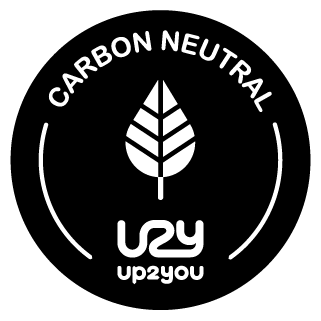Last update: April 1, 2024
We are committed to reducing our carbon footprint and doing our part to combat climate change. We understand the importance of taking action to address this global issue and are dedicated to implementing sustainable practices throughout our operations and product development.
The company began in 2019 to reduce waste and costs while increasing productivity both in relation to the corporate structure and the Artificial Intelligence products it is a provider of.
Thereby achieving a significant reduction in the carbon footprint of the company and its products.
The main changes already made are:
- creating a more flexible and sustainable working environment by becoming a fully remote company. We have built an employment contract that offers our employees greater flexibility in managing their working time, allowing them to adapt their working hours to their personal and family needs. This choice has allowed us to reduce the environmental impact linked to energy consumption in the workplace and transport, eliminating the need for daily travel to reach the workplace. Furthermore, this flexibility in managing their time has allowed employees to optimize their productivity and have more time for themselves and for their personal and family activities. We are proud to have taken this path and to continue working to create an increasingly sustainable work environment that respects the needs of our employees.
- create a very small (about 1 MB in size) deep neural network model with comparable accuracy to the internally trained parent model.
- design the AI software to work on the client side instead of the server side, which reduces the energy consumption associated with data centers. More details on the benefits of a client-side processing AI engine architecture are detailed on this link: advantages of client-side processing Emotion AI.
- move away from local AI servers for training our deep neural network model in favor of multipurpose and globally scalable cloud architectures that allow sharing resources, reducing energy consumption and costs.
- use dynamic lambdas instead of dedicated servers to power our services. This decision was made as part of our ongoing efforts to reduce our carbon footprint and increase energy efficiency. Using dynamic lambdas allows us to use only the resources we need, when we need them, instead of maintaining dedicated servers that may not always be fully utilized. This reduces the amount of energy consumed and reduces our overall carbon footprint. Additionally, many cloud service providers offering serverless architectures have committed to using renewable energy sources to power their data centers, further reducing our carbon footprint. Using dynamic lambdas also allows us to scale our services more efficiently. We can automatically adjust the number of resources allocated to our services based on demand, which ensures that we are not overloading resources and wasting energy. Furthermore, by using dynamic lambdas, we are able to reduce costs associated with maintaining and upgrading dedicated servers. This allows us to redirect those savings towards other sustainability and environmental initiatives. In summary, choosing to use dynamic lambdas instead of dedicated servers is a strategic decision in line with our commitment to reduce our carbon footprint and increase energy efficiency. It allows us to consume resources only when needed, scale efficiently and reduce costs, allowing us to channel those savings towards other sustainability and environmental initiatives.
We understand that reducing our carbon footprint is an ongoing process and are committed to regularly reviewing and updating our sustainability efforts. We also plan to transparently report our progress and set ambitious goals to continue reducing our carbon footprint over time. In addition to these efforts, we would also like to implement a program of constant measurement and monitoring of carbon emissions.
We also aim to explore the goal of fully offsetting carbon emissions to mitigate any remaining emissions we are unable to eliminate, becoming a Carbon Neutral Company providing Carbon Neutral Services.
This includes investing in carbon offset projects such as renewable energies, forest Preservation, reforestation, clean energy, social impact and new technologies to remove carbon dioxide from the atmosphere.
Program Update March 21, 2023:
Cynny SpA has made significant efforts to reduce its environmental impact, resulting in a reduction of CO2 equivalent emissions. However, there is still room for improvement in other categories. The company’s carbon footprint was first measured on the first day of spring 2023 by Up2You S.r.l. Società Benefit, Via Londonio 1 – Milan, 20154 – www.u2y.io – sustainability@u2y.io.
The carbon footprint of Cynny Spa is 1.458,70 kg of CO2 equivalent.
The total uncertainty of the scope 1 and 2 emissions calculations of Cynny Spa is 16,76%.
But what does this carbon footprint equivalent correspond to, physically?

Cynny Spa’s emissions weigh as much as:

You can find here the whole report: Neutral Company Carbon Footprint
Program Update April 20, 2023:
Cynny S.p.A. is now a Carbon Neutral Company Certified on BlockChain:
Program Update August 9, 2023:
Mesured the carbon footprint of the services provided by the company.
The company offset the carbon emissions of the products/services provided in the year 2022.
Check out the results at this link: Overview Digital footprint


Next steps:
Maintain complete carbon neutrality by continuing the program to further reduce the carbon footprint of the company and its products and offset non-resettable emissions.
